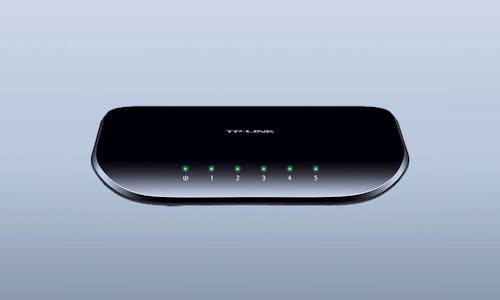While there’s many broadband speed test tools available, there’s a number of things you can do in order to get a ‘true’ broadband speed test. Because so many factors can influence the actual speed you can get – distance from the telephone exchange being the big one for ADSL – it’s worth taking these into consideration when doing a speed test.
Here’s Recombu Digital’s top tips on how you can go about getting the most accurate broadband speed test results for your home or business.
 Plug in baby: Use a wired and wireless router
Plug in baby: Use a wired and wireless router
In order to get the best idea of how fast your line is we’d suggest doing speed tests on your laptop or desktop machine both directly connected to your wireless router and wirelessly.
The reason is that a wired connection won’t suffer from any interference and will give you a more accurate idea of the ‘raw’ speed available down your line.
If you’re living in a shared or busy house where the wireless router has been optimally positioned for everyone then you might want to do a wireless test as well, in order to get a more realistic idea of the speeds available.
In our previous guide on speeding up your broadband connection we briefly talked about where’s the best place in the house to position your wireless router.
Generally you should avoid placing the router anywhere in the house where there’s likely to be interference; leaded glass, microwaves, fridge freezers, baby monitors, a TV set (basically anything with a solenoid in it) and walls will all interfere with wireless signal. It’s a wonder wireless routers work at all with all of the gadgets that stack up in our houses these days…
The basic rule of thumb with wireless routers is to make sure there’s a decent line of sight between the router itself and your laptop. Obviously this can be tricky when indoors, given that houses tend to be mainly made up of walls.
Add a microfilter to your BT Master Socket, cut that bell wire
Chances are, your BT Master Socket will already have a microfilter added. This is a small device that basically makes sure that your broadband and landline phone signals don’t intermingle and interfere with one another. Most houses these days with a BT Master Socket will already have a microfilter added. For more information on microfilters, check out our separate feature on optimising broadband speeds.
Older houses may also have master sockets with an active bell wire. This wire, an evolutionary hangover from the older days of phones, would ring the bell in older phones when there was an incoming call. Unused these days, bell wires can be a source of interference (as the metal wire acts as an antenna) which can affect your broadband speed.
Though disconnecting the bell wire is a relatively simple task, it’s best to get a BT engineer in to do this. If you’re getting BT Broadband installed in the home, the engineer will normally check to see of the bell wire is connected and remove it.
Once you’re confident you’ve done everything you can to optimise conditions in the home to begin your speed test, its time to actually get some testing done.
Use a Broadband Speed Test tool
There are plenty of broadband speed testers and line checker tools available on the web, including Recombu Digital’s very own one. We’ll be looking at other speed tests available on the web in a later feature, but for now we’ll take a look at ours.
Most broadband speed test tools work by asking for your postcode – this it to help determine which telephone exchange you’re connected to. The actual speed test will be made using your line. So you’re getting an accurate measure of the download and upload
Recombu Digital’s speed test also measures latency – ping refers time that it takes to send a request from your computer to the internet cloud to your destination (i.e. another computer or website server). Ping is expressed in milliseconds (ms). Generally, the lower the ping the better – especially if you’re playing multiplayer games online.

Remember the Law of Averages: Do more than one speed test
If you’re fairly confident that you’ve done everything you can to optimise conditions for testing your line speed, go ahead and start using a speed tool.
But don’t just do one test. Do several. Do three or five and then add and divide the results by however many times you’ve tested. This will give you a more realistic idea of the optimal download and upload speeds you’ll be getting.

Do multiple tests under different conditions
Don’t stop there either. If you’re living in a shared house, try line speed tests when more than one person is connected.
Do a test when you’ve turned your iPhone on and are connected to the Wi-Fi point for an idea of how things will be when you’ve got a crowded house.
Depending on the ISP you’re currently using and your browsing habits, you also make experience slower than normal connection speeds if you’ve been using P2P networks or you’re connected during peak times. Try out speeds tests (if possible) during the day, the evening, late at night and on weekends. Try out speed tests when someone else is downloading or streaming video, playing games or logged on to Facebook.
There any many factors that can influence the performance of your broadband service and its best when testing, to simulate these and give you the best idea of the service you’re likely to get.

Leave a Reply